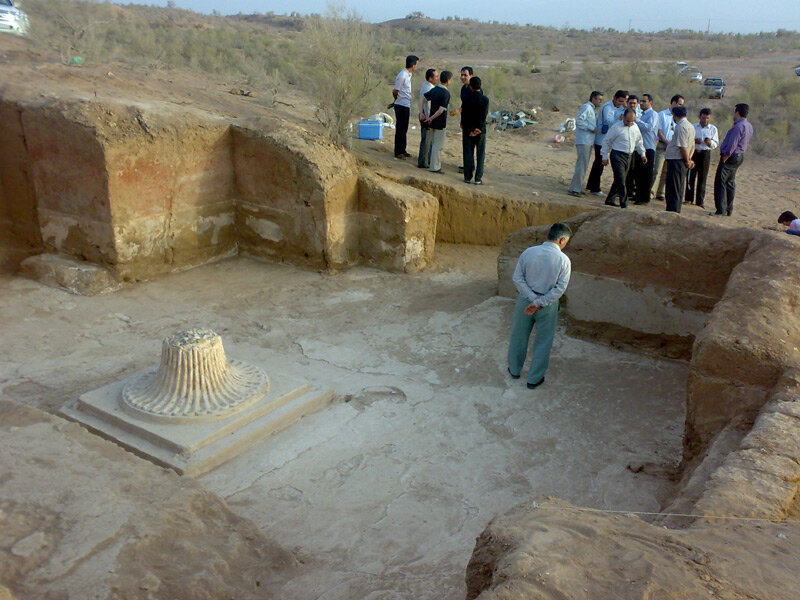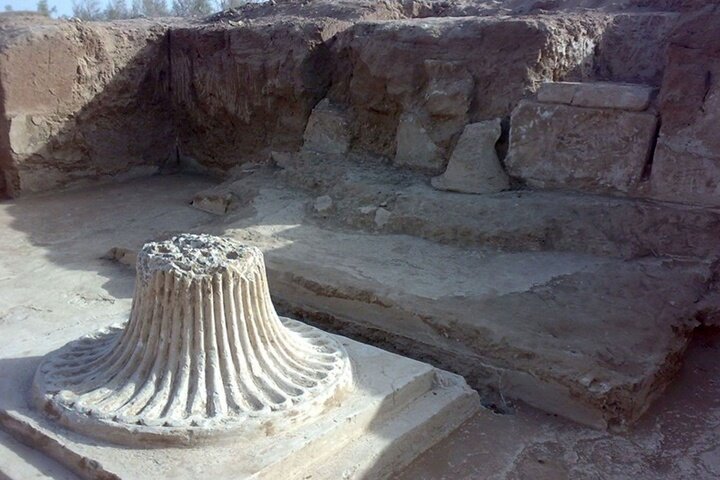Sassanid-era Vigol fire temple undergoes restoration

TEHRAN – Restoration work has commenced on the Vigol fire temple, a rare archaeological site from the Sassanid era located in the central province of Isfahan, the provincial tourism chief said on Saturday.
Amir Karamzadeh said on Saturday that the project started due to the need to reinforce the internal spaces and walls of the ancient structure, which is located near Aran-Bidgol.
“The restoration was initiated following scheduled planning and in response to the condition of the structure, which required stabilization,” Karamzadeh said.
The fire temple, discovered in 2010, lies within the 120-hectare Vigol archaeological zone, approximately 10 kilometers north of Aran-Bidgol and near the central Iranian city of Kashan. The site has been continuously inhabited or used from pre-Islamic times through the early Islamic centuries.
According to Iranian archaeologist Mohsen Javari, who led the original excavation, the central section of the Sassanid fire temple was unearthed with its bedding fireplace still relatively intact. He noted that evidence pointed to the existence of a religious center in the area during the Sassanid period.

The Sassanid dynasty ruled Persia from 224 to 651 CE, a period marked by cultural, artistic, and architectural development. Scholars have described the era as a renaissance of Iranian civilization, with advancements in urban planning, metalwork, and the state-supported translation of foreign texts into Pahlavi.
Javari's excavation team included experts from the universities of Isfahan, Tehran, and Kashan, who began archaeological work at Vigol in 2005. The site is considered one of the few remaining examples of Sassanid religious architecture in the region.
In 2018, UNESCO designated the “Sassanid Archaeological Landscape of Fars Region” in southern Iran as a World Heritage site, recognizing the influence of Sassanid architecture on subsequent Islamic construction. The listing includes fortified structures, palaces, and city plans in areas such as Firuzabad and Sarvestan.
The Sassanid dynasty ended in the mid-7th century following the Arab conquests. Zoroastrianism, the state religion under Sassanid rule, gradually gave way to Islam, though archaeological remains like Vigol continue to shed light on the period’s cultural and religious landscape.
AM
Leave a Comment